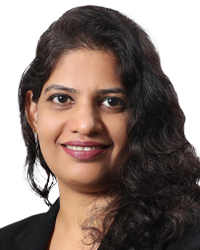Artificial Intelligence (AI) is now a familiar term and is a part of our everyday lives. AI is behind applications performing tasks that once required human effort. Today, lawyers use AI for research, document automation, contract management and litigation databases.
AI is already in judicial use globally. Since 2021, India’s highest court has used the Supreme Court Portal for Assistance in Court’s Efficiency. SUPACE, a tool able to identify facts, issues and points of law from thousands of pages of documents. Since the end of last year, it has had access to the Supreme Court Vidhik Anuvaad Software or SUVAS, which translates judgments from English into vernacular languages.
In the USA, The Correctional Offender Management Profiling for Alternative Sanctions (COMPAS) predicts the chances of criminals reoffending, based on factors including sex, age and criminal history. The Supreme Court of Brazil has implemented the Victor AI to help it identify cases with repercussão geral (general repercussion) involving major social and public issues. The Public Prosecutor’s Office in Buenos Aires, Argentina, can predict court case solutions in less than 20 seconds with a 96% success rate through a programme called Promatea. Internet and smart courts in China feature non-human judges, powered by AI, allowing participants to register cases online and resolve their matters in digital court hearings.

Partner
TMT Law Practice
ChatGPT has recently attracted great interest. It is an open AI designed to generate human-like responses using large amounts of data. The programme itself claims to analyse data and generate a response. ChatGPT has been used in delivering judgments. A court in Colombia asked whether autistic minors were exempted from fees for their therapies and received the response that they were. This judgment prompted discussion on the judicial use of AI. The judge in question defended the technology as it was effective, adding that the judgment referred to earlier judicial authorities. That implied that the judgment was not based solely on ChatGPT.
The Punjab and Haryana High Court in Jaswinder Singh v State of Punjab rejected a petition for bail, as the prosecution alleged the petitioner was involved in a brutal fatal assault. The judge asked ChatGPT (post-reasoning) to assess the worldwide view on bail when an assault was accompanied by cruelty. Disappointingly, for advocates for and detractors of AI, ChatGPT responded with an anodyne answer that it depended on the circumstances of the case and the particular jurisdiction.
Italy banned ChatGPT at the beginning of April this year over privacy concerns. However, the country lifted the restriction at the end of that month after receiving assurances from OpenAI, the owner of the programme.
There are a number of concerns over the use of AI. Responses created by an AI draw on available data and doubts arise as to whether such information is genuine, verified and reliable. There may be a lack of transparency, as AI consists of algorithms created by entities and individuals and disclosure of core aspects may not be forthcoming, as appears to be the case with COMPAS.
The use of AI raises questions of accountability, such as how far an AI can be used in court judgments. There may be no juridical basis for AI-provided output and it may not be clear who is accountable for judicial pronouncements produced primarily by AI.
Important questions arise as to who is the owner or author of an AI result: the developer of the algorithm; the entity that engaged the developer; the AI that analysed the data and created the result, or the end user. These may pose serious obstacles to getting copyright protection for AI-generated content. US copyright laws do not protect works created solely by computers whereas they may do so in the UK. Copyright laws in India do not provide definitive answers, although courts have granted copyright protection for AI-generated work.
AI systems save time and increase efficiency. However, the use of AI in judicial proceedings must be responsible and therefore explicable, transparent and accountable. Dr Dory Reiling, former senior judge and expert for the Council of Europe has said that AI should be able to explain how it came to a result, both as to how information was processed and by giving a substantive explanation.
Sapna Chaurasia is a partner at TMT Law Practice.
TMT Law Practice
C-2/39, Safdarjung
Development Area,
adjacent to Aurobindo Market
New Delhi-110 016, India
Contact details:
Tel: +91 (11) 26512813
+91 (11) 41682996
Email:



























